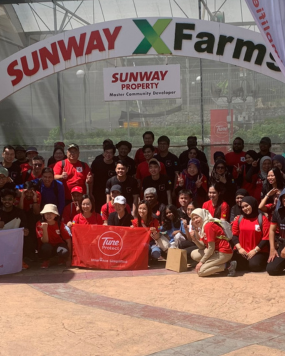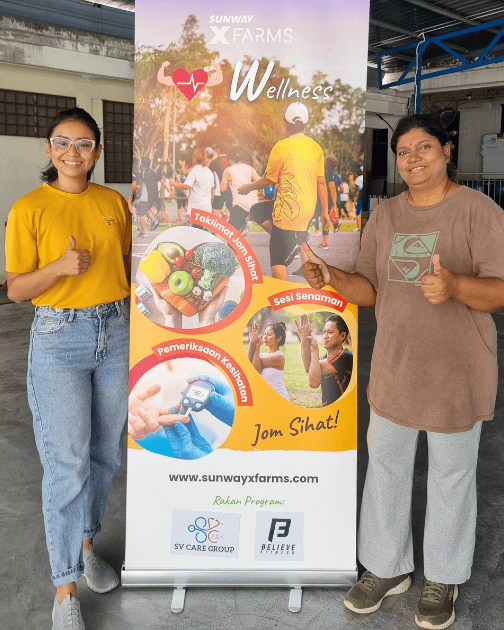The meals we partake in daily do not come without a cost, both to the earth and life on it. In fact, agriculture is one of the top 5 most polluting industries in the world. Have a read below to see what the problems are & how urban smart farming can address them.
What is sustainable agriculture?
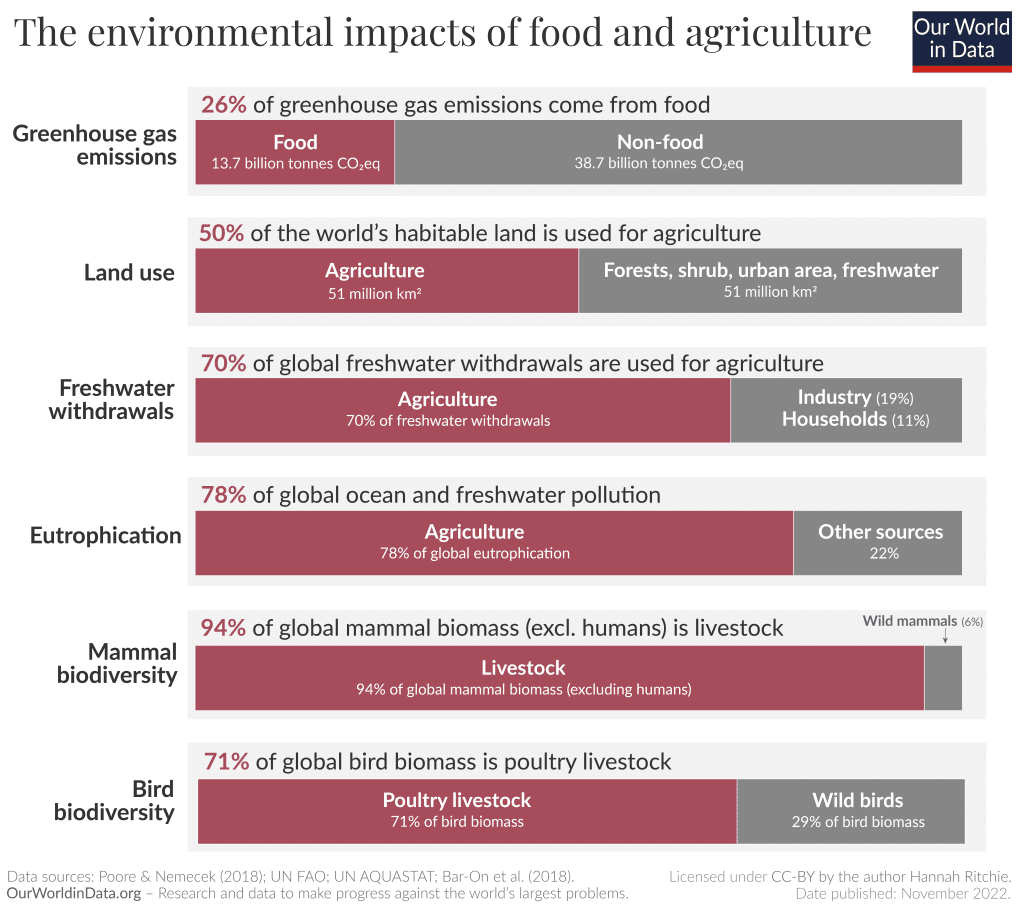
The problem globally:
- Agriculture uses 50% of global habitable land
- 70% of freshwater is used for irrigation
- Over 25% of greenhouse gases emitted are from agriculture
Agriculture is a necessity for us, but takes an alarming amount of resources to meet those needs. Globally, agriculture uses 50% of habitable land, 70% of freshwater, and is responsible for more than 25% of greenhouse gas emissions. Furthermore, it pollutes water, soil, and air. Agriculture is the 2nd most polluting industry and contributes to another 3 of the top 5 most polluting industries (Electricity, Transport, Food Packaging).
We clear and burn land for agriculture, we engage in deforestation to find fertile land. And after the soil has degraded from intense farming we abandon it to burn new forests. Earth has lost a third of arable land in the past 40 years. Nearly 33% of the world’s food-producing land has been lost in a pace way faster than diminished soil can be replenished. These emissions don’t just stop at agriculture. The transportation of the food, the packaging & the storing of them at the supermarket all add up.
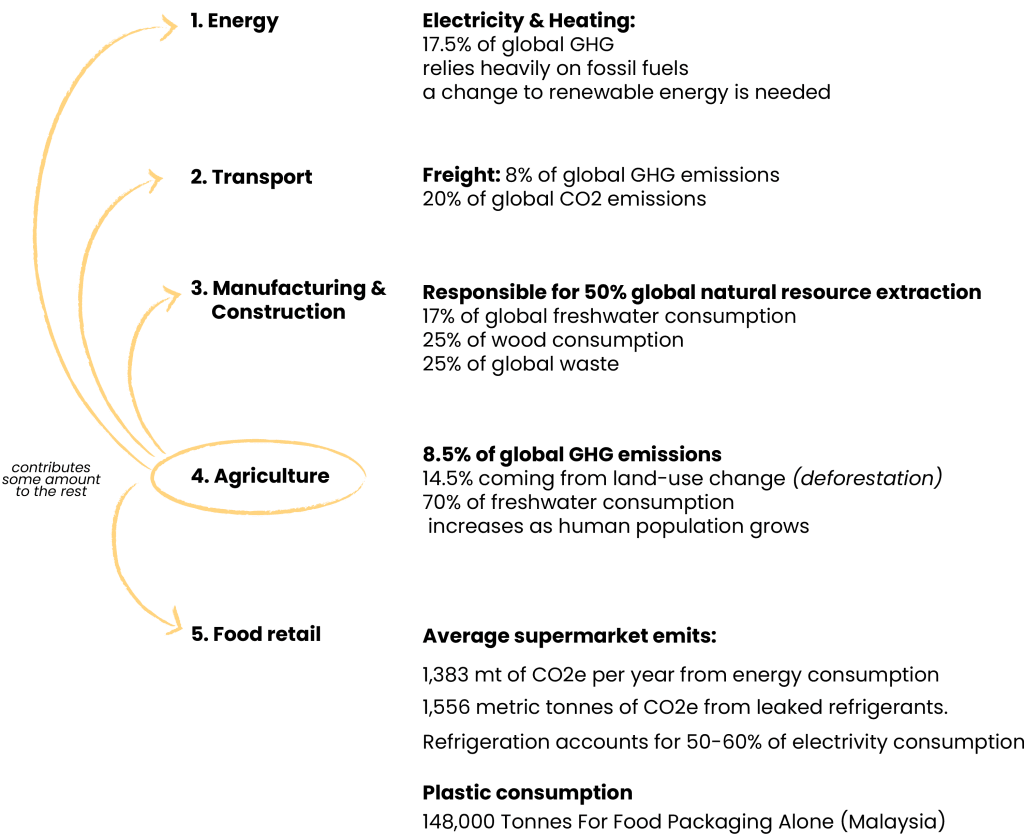
Transport is 2nd on the list, accounting for around one-fifth of global carbon dioxide (CO2) emissions, with commercial freights consisting of 40% of that. Limiting international travel includes our purchases, going local when possible. We need better local products– in terms of vegetables, not only will it be fresher & have less food miles, but if we can achieve a quality equal to or better than their imported counterparts, that becomes the more sensible option for both the people and the planet
Food retail is the 5th. Since plastic is made from oil, food packaging is generating a huge amount of emissions. It takes decades to centuries for plastics to break down while we continuously create more every day. Refrigeration is the most energy-intensive part of a supermarket, accounting for 50-60% of the electricity consumption – most of which will be produced by fossil fuels. Not to mention, leaking refrigerants such as the ones used in grocery stores are responsible for “70 Million metric tonnes of CO2 equivalent emissions each year”— enough to power 12 million homes.
Transporting food to supermarkets also generates a lot of emissions, depending on where it’s shipped from – also known as food miles.
How do we address these issues? We forgo single-use plastics. We shorten the journey direct from farm to you. We grow within 20km of you.
The problem locally:
- We lack in self-sufficiency & food security despite rapid urbanization
- 85% population will live in urban areas by 2030
- 26% land is used for agriculture
- 55% of vegetables are imported
- >35% vacant units in Klang Valley
Population growth will continue to grow yearly, projecting to hit 9.8 billion by 2050. As human population continues to grow, so will the food required for our dietary needs. Traditional farming methods will not be able to keep up with this amount if it continues to deplete large amounts of resources while producing food which are not efficiently grown and consumed.
It becomes a fight for land– land to live in versus land to grow food in.
How smart farming addresses these problems
Smart farming uses technologies like IoT, robotics, drones, and AI to enhance and optimize food production. We take it a step further by building smart farms in smart places.
How do we address the overlapping necessity for land to provide for our needs– both for habitation and dietary?
Urban smart farming plays an important role in addressing both food security and agricultural sustainability. How? By building in existing but unused city spaces and growing vertically!
Malaysia is full of ghost buildings– properties developed and quickly sold off without proper advertisement, only to never be rented out successfully. Locally, more than 35% of Malaysian buildings are vacant while more new projects continue to be developed. By turning underutilized city spaces such as empty buildings and rooftops, we contribute to a more sustainable city, traceable food supply, accessible food, and lower carbon footprints.
We have a fixed surface area on the planet, and even more so city spaces that are suitable for growing food. However, we can make full use of any given space by growing food vertically, just as how libraries and apartments are able to accommodate large amounts of books and tenants in a limited space.
Because urban farms are built from the ground up, circular watering systems are built into these farms. These systems allow just the right amount of nutrients & water to flow through the roots of all crops, instead of large amounts of water pouring into the soil without promise of reaching the plants. Circular watering systems can reduce water usage by up to 90%!
By building farms within the cities, not only do we reduce the food journey but we reduce crop wastage from transport damage, cold trucks, and even supermarket refrigerants when the journey is direct from farm to you.
Of course, urban farms have their limits, and more development is needed, but it’s a good place to start with growing crops such as leafy greens, herbs, and fruity varieties.
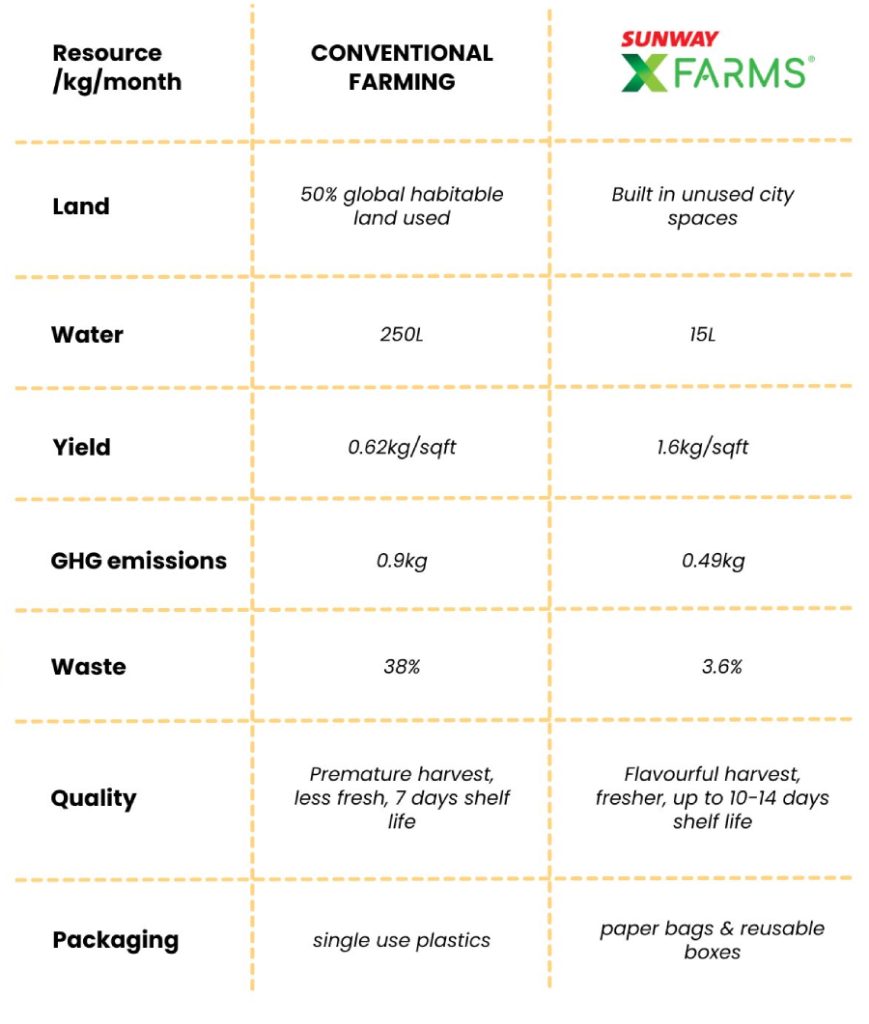
What we are doing
To date Sunway XFarms has grown over 58,000kg of fresh vegetables across 5 different farms, prevented over 3,000,000 food miles, used 0 pesticides which prevents runoffs into water causing eutrophication and acidification, minimized plastic packaging; all while providing the local community with fresh, quality vegetables grown within 20km of their neighbourhood.
Our four target goals are to 1. transform underutilized city spaces into urban farms, 2. provide transparent & traceable supply, 3. bring communities access to fresh, quality food, and 4. to grow even more food with even less resources.

